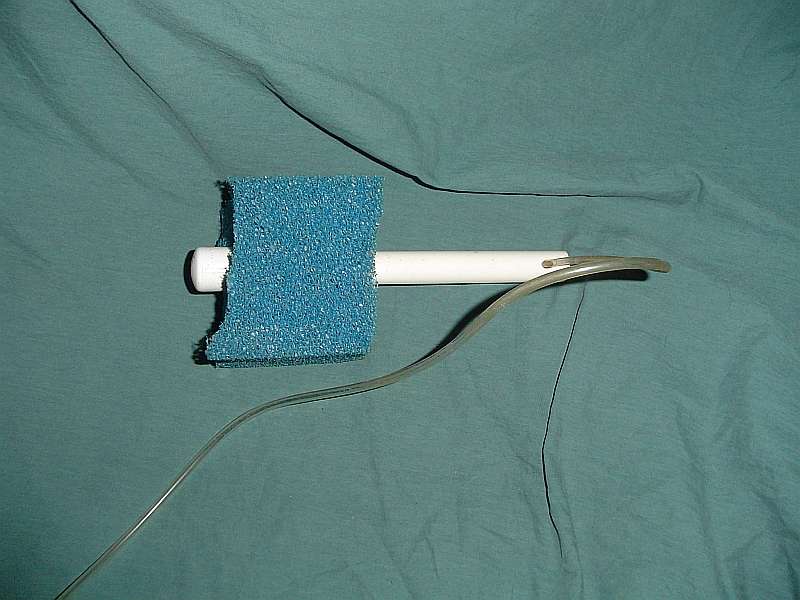First, the site was not linked to because they sell anything. It was used because finding good illustrations of how and why sponge filters work is not so easy. But I found another
Sponge or Breeder Filters
They sell the Hydro line, they are going to sing its praises. Can’t blame them, I’d do the same if I were selling them.
Second, sponge filter are also excellent mechanical filtration, they are not solely for bio. Because they are good mech filters you must rinse them out weekly to prevent their clogging and thus reducing their bio filteration capability. And some sponge filters also allow for the addition of a carbon insert which is a form of chemical filtration although this is not their strong point. Can you please post a link to any site that says sponges are only for bio?
I never stated that they were only for bio, I stated that they excel at bio filtration. I also stated that you should use them for what they excel at. Per the site you linked to;
“As well Sponge filters perform mechanical filtration (removal of debris), however this is this is not their primary strength (biological filtration is their strength), which is why the best filtration would be a combination of a sponge filter and a HOB (power filter)”
Third, one should use an uplift tube despite your opinion to the contrary. If this were not the proper way to operate them why does every manufacturer of them include the uplift tube?
I never stated that you shouldn’t, I said that I have, and you can.
Fourth, your picture does include the HO- it is the sponge on the far left- they are just not included in the bulk purchase discount offer. Go here and you will see the same picture but with the model numbers listed under them.
Jehmco
I realize what the picture shows, and that is why I posted it, as it does show a sponge filter sold with a considerably shorter uplift tube. I also know where that picture is from; they have seen plenty of my money pass their way.
Fifth, I have surfed through about a dozen sites with sponge filter info- not one suggests a sponge filter can or should be used without an uplift tube. I know folks running large systems with 100s of sponge filters and not one runs them without an uplift tube or has ever suggested doing so. You are the first fishkeeper I have run across either in person or online who has said an uplift tube is superfluous to the proper functioning of a sponge filter? Could you perhaps provide links to sites that do?
I never stated that the uplift tube was unneeded, and I did state, as in a dropped water situation which would most likely be included in a breeding attempt, that they will function without the uplift tube. Here’s a link to an article that has been around for years, it will explain why you might want that low of a water level; http

/www.aquarticles.com/articles/breeding/adolfsson_dry%20and%20rainy%20seasons.html
I could make a website that says the moon is made of green cheese, and that Hydro sponge filters run best with no uplift tube and run upside down. That wouldn’t make either one a fact. What is a fact is that the Hydros, with the removable uplift tube, make them ideally suited for those lower water level situations.
I did count sponge filters running in my setup this evening when I went around feeding; 38. I’ve got half a dozen tanks shut down ATM, those don’t count as running. Some of those sponge filters are Hydros, some are made by other folks, the most durable are the ones I’ve made myself;
The issues I have with the Hydros are that they are not cichlid proof when dealing with larger fish, and the rate at which that foam, which only comes in a very high ppi deteriorates. You can make a more durable filter, and one more suited to your purposes with PVC, and foam with a ppi more suited to your need.
If you check out some of the products found here; http

/www.swisstropicals.com/Poret%20Filter%20Foam.html you will see that there is a range of foam from very coarse, which would work ideal with a powerhead/sponge setup, to very fine, which would be best suited for the smallest fry. Personally for my setup, which is mainly air driven filtration, the sponges are set up for lower flow bio filtration, and large box filters are set up for higher flow mechanical filtration. While I mainly run floss in the boxes at times I will run peat, something that is difficult to do with sponge filters. Since we mentioned Jehmco, they do have the large LJRBF box filters on sale; http

/www.jehmco.com/html/box_filters.html
These are the best I have found so far, as they have a large enough capacity to run things such as peat along with floss in a large enough quantity for larger tanks.















 /www.aquarticles.com/articles/breeding/adolfsson_dry%20and%20rainy%20seasons.html
/www.aquarticles.com/articles/breeding/adolfsson_dry%20and%20rainy%20seasons.html 